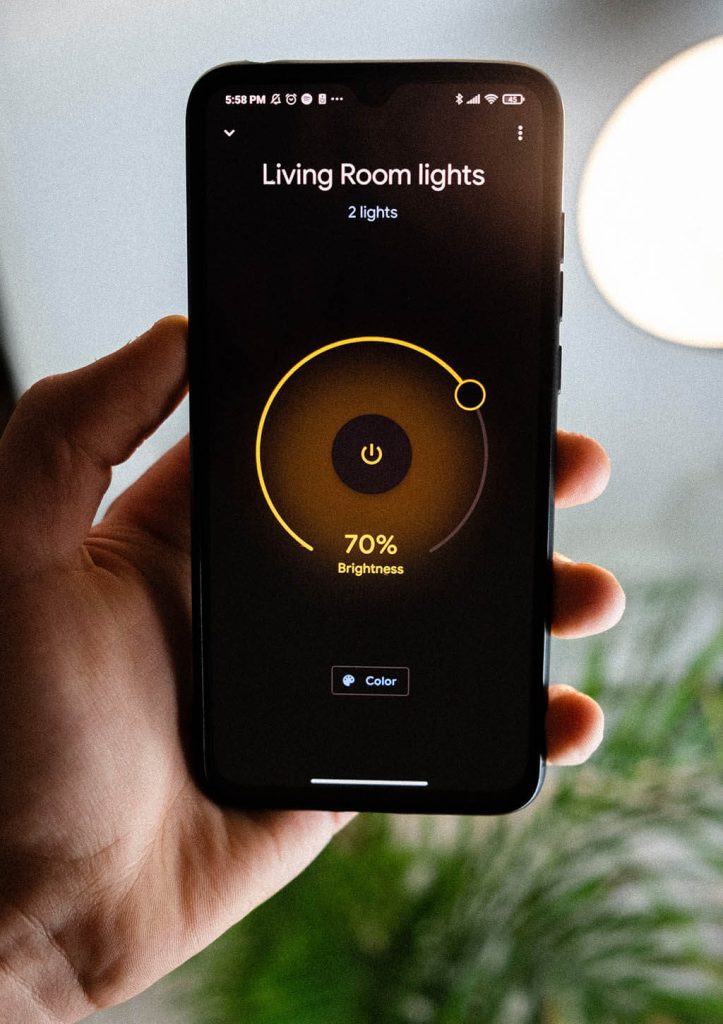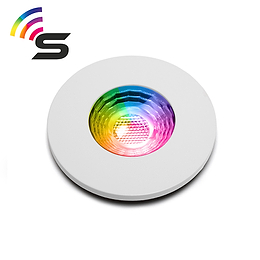How to Transform Your Home With Smart Lighting
How to Transform Your Home With Smart Lighting

Smart lighting has been around for a little while now. And, every year
Smart home technology is becoming more advanced and more accessible. We look at how this innovative technology can put you in control of your home lighting.
What are the Benefits of Smart Lighting?
Smart lighting technology is enormously popular due to the benefits it provides. The programmable nature of smart bulbs can save you money, make it more convenient to light your home and provide greater security.
Smart bulbs and switches have come forward in leaps and bounds in their ability to automatically set moods and scenes in your home. What used to be the stuff of science fiction is now available at your fingertips.
But, much like in the pre-smart days, you still need to plan our lighting carefully. Fortunately, technological advances mean we can include a level of flexibility that has never been available to us before.

How Does Smart Lighting Work?
In the early days of smart lighting, smart hubs were required to control and manage your home lighting, however, these days, there are plenty of smart bulbs that simply require a mobile app. Many systems can now be voice activated giving you even more control.
Virtually all Smart home hubs run over Wi-Fi and many already include an app to control them. Popular smart home systems include
Google Home, Alexa, Apple Home and Samsung Smart Things.
However, with the ability to pretty much do everything at the touch of a few buttons on a smartphone, the future will likely see smartphones wholly replacing hubs.
How to Choose Smart Bulbs and Lighting
When choosing a smart bulb, many of the things to keep in mind are the same considerations as those that are relevant to non-smart bulbs, including cap fitting, whether it is a trusted brand, wattage and lumens.
However, one consideration specifically for smart bulbs is their compatibility with certain apps and hubs. Most smart bulbs are compatible with Google Home and Alexa, but not all appear to work with Apple Home or Samsung Smart Things. We recommend you check compatibility with your smart bulbs and switches before buying.
When choosing smart ceiling lights, downlights or wall lights, the features to be mindful of are the same as when choosing a normal bulb, but you can also choose styles and finishes.
How to Choose Smart Switches
Smart switches work much like ordinary light switches, however these can also be linked to the cloud so they can be controlled remotely. This way, using a system like Google Home or Alexa, you can control them by a schedule.
When choosing a smart switch, again make sure it is compatible with the software you are using, be it Google, Alexa or Apple.
You may also want to check more advanced features such as movement sensors, which allow you to set your lights to switch on when you walk into a room. Very clever!
Unfortunately many smart switches aren’t particularly attractive and don’t tend to fit into period or classic decors. Retractive switches, however do offer the ability to work with smart technology, without compromising on appearance.
A retractive switch sends a momentary signal, rather than maintaining a switched-on position. So, that signal can be programmed to trigger a wide variety of functions. The switch could raise and lower a blind or shutter, control lighting, turn up a thermostat, or even control an entertainment system.

How To Plan Your Smart Lighting
Once you’ve chosen and installed your smart lights, a great step to take is to set up various scenes. Scenes are one of the fundamental aspects of smart lighting systems. They allow you to program light settings for a variety of situations in your home.
For example, you could have one for parties, one for relaxing, one for reading, one for eating and so on. This way, you can easily tell Google or Alexa to change the whole lighting set up in your house, instantly setting the scene.
Popular scenes include;
- Dinner - A Dinner scene might light the dining room wall sconces and turn off or dim the living room lights
- Night - This scene could turn off most lights in the house but keep a dimmed light across the hallway or stairs to make it safer for anyone coming back late
- Party - The perfect party scene, might use different types of coloured lighting. It may also dim the lights so that the ambience is better for chatting and having drinks with friends.
- Reading - This scene could turn on the wall scones next to your favourite reading chair and dim the lights elsewhere.
Smart lighting also allows you to integrate new colours into your lighting plan. Whilst we are used to different colour temperatures, smart bulbs allow us to integrate blue, green, red, purple and many more light colours into our homes.
Previously you would need to buy a specific colour lightbulb to achieve this. However, few of us want a red or blue bulb in our living room on a permanent basis. With smart lighting, you can use scenes to create coloured lighting for certain scenarios, then, revert to a more normal colour afterwards.
How does smart lighting save energy?
How often have you forgotten to turn the lights off? With programmable smart lighting, this is a thing of the past. The ability to program individual or groups of lights throughout your home, can help cut down on energy usage.
For example, you can schedule the lights to turn on, or turn off at a specific time. You can dim lights in the evening to reduce energy consumption.
Lights can also work with motion sensors so that they only come on when you enter a room, and automatically switch off when you leave.

How does smart lighting improve home security?
Smart lighting provides a significant boost to your home security. They do this in a number of ways, ranging from simple measures to far more advanced methods.
A simple step would be to program dimmed lights across your garden and entrance at night. A level of illumination is more likely identify persons and always creates a psychological deterrent
In a more advanced setup, smart operated lights can work together with security cameras to keep your house safe. For example, motion sensors can detect movement and automatically turn on a light. Not only does this light guide welcome visitors, it will also deter any criminal activity.
[related_products is_auto_added="1"]









